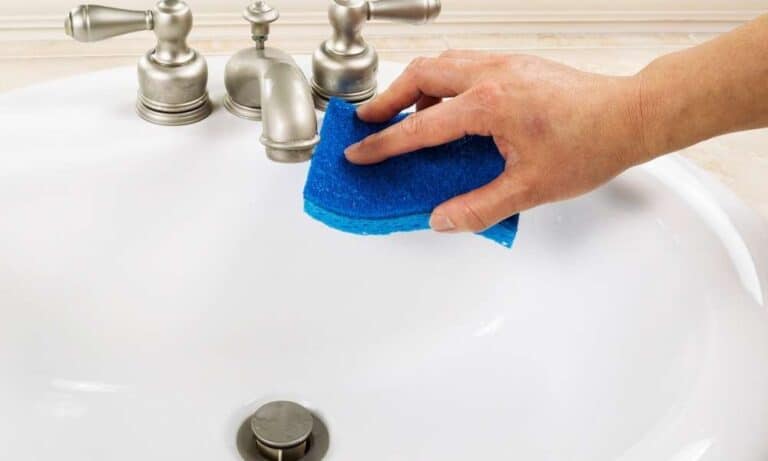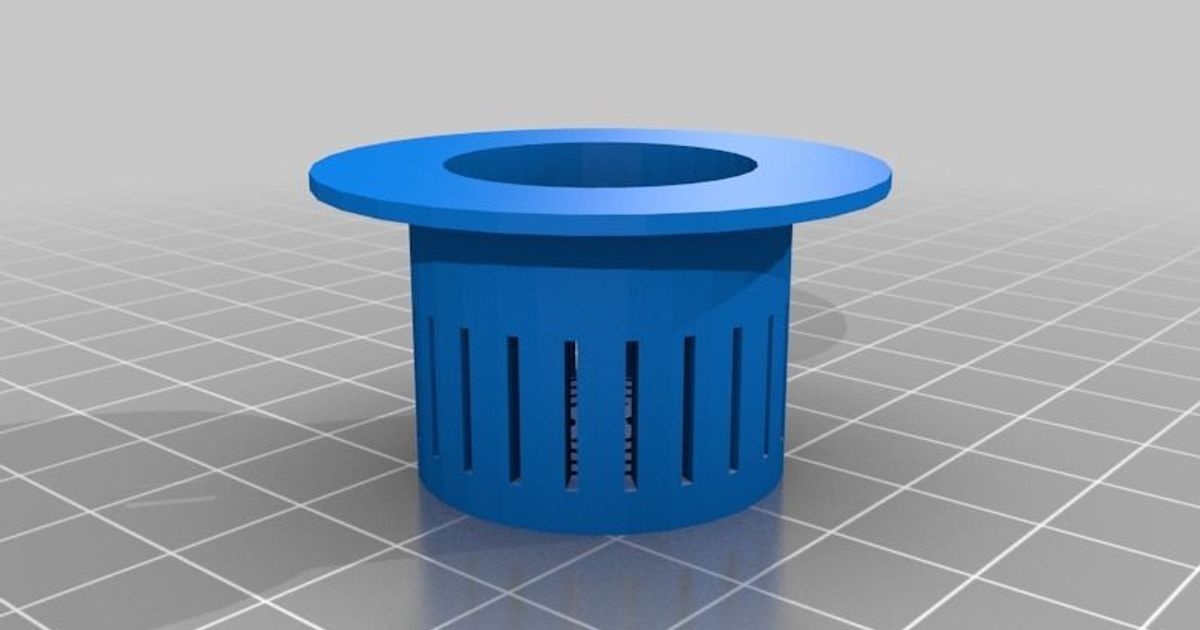When it comes to choosing a bathroom sink drain, one of the biggest decisions you'll have to make is whether to go with plastic or metal. Both materials have their own unique benefits and drawbacks, so it's important to understand the differences between them in order to make an informed decision. In this article, we'll compare plastic and metal bathroom sink drains and help you determine which option is best for your bathroom.Plastic vs Metal Bathroom Sink Drains: Which is Better?
Let's start by looking at the pros and cons of each material. Plastic drains are typically made of PVC or ABS and are relatively inexpensive. They are also lightweight and easy to install, making them a popular choice for DIY homeowners. However, plastic drains are not as durable as metal and may crack or break over time. They are also more prone to clogging, as they can easily become dislodged or warped. Metal drains, on the other hand, are typically made of stainless steel, brass, or copper and are known for their durability and longevity. They are less likely to crack or break and are more resistant to corrosion and rust. However, metal drains can be more expensive and may require professional installation, as they are heavier and more complex.Plastic vs Metal Bathroom Sink Drains: Pros and Cons
One of the main differences between plastic and metal bathroom sink drains is their composition. Plastic drains are made of synthetic materials, while metal drains are made of natural materials. This can affect their performance and longevity, as synthetic materials are more prone to wear and tear over time. Another difference is the level of customization and design options available. Plastic drains are typically only available in a limited range of sizes and designs, while metal drains can be custom-made to fit your specific sink and aesthetic preferences. This means that metal drains may offer more versatility and flexibility in terms of design and functionality.Plastic vs Metal Bathroom Sink Drains: Comparison and Differences
As mentioned earlier, metal drains are generally considered more durable and long-lasting than plastic drains. This is due to the natural strength and resistance of metal materials, which can withstand heavy use and exposure to water and chemicals. On the other hand, plastic drains are more susceptible to wear and tear, especially in high-traffic bathrooms. However, it's important to note that the durability and longevity of a bathroom sink drain also depend on proper maintenance and care. Both plastic and metal drains should be cleaned regularly to prevent clogging and buildup, which can lead to premature wear and tear.Plastic vs Metal Bathroom Sink Drains: Durability and Longevity
When it comes to cost, plastic drains are generally more affordable than metal drains. This is because plastic is a cheaper material to produce and is easier to work with. However, as mentioned earlier, metal drains may require professional installation, which can add to the overall cost. In terms of maintenance, both plastic and metal drains require regular cleaning to prevent clogging and buildup. However, metal drains may be more resistant to stains and discoloration, making them easier to maintain in the long run.Plastic vs Metal Bathroom Sink Drains: Cost and Maintenance
As mentioned earlier, plastic drains are relatively easy to install and can be a great option for DIY homeowners. They typically come with a simple push-and-twist mechanism that allows for easy installation without the need for special tools or expertise. On the other hand, metal drains may require professional installation, as they are heavier and may require more complex tools and techniques. Additionally, if you need to replace a plastic drain, it can be easily done by twisting and pulling it out. Replacing a metal drain may involve more extensive work, as it may be soldered or screwed into place.Plastic vs Metal Bathroom Sink Drains: Installation and Replacement
When it comes to the environmental impact, plastic drains may be considered the more eco-friendly option. This is because they are made of recyclable materials and are lightweight, which reduces their carbon footprint during manufacturing and transportation. Metal drains, on the other hand, require more resources to produce and may not be as easily recyclable. However, it's worth noting that both plastic and metal drains can have a negative impact on the environment if not disposed of properly. It's important to follow proper recycling and waste management practices to minimize the environmental impact of your bathroom sink drain.Plastic vs Metal Bathroom Sink Drains: Environmental Impact
As mentioned earlier, metal drains offer more design and customization options than plastic drains. This can be a significant factor for those who want their bathroom sink to be a statement piece in their design aesthetic. Metal drains can come in a variety of finishes, such as brushed nickel or oil-rubbed bronze, which can add a touch of elegance and sophistication to your bathroom. However, plastic drains can still be a viable option for those looking for a simple and functional design. They may not have as many options in terms of finishes, but they can still blend in seamlessly with most bathroom designs.Plastic vs Metal Bathroom Sink Drains: Design and Aesthetics
One of the main concerns when it comes to bathroom sink drains is water flow and clogging. Metal drains are often considered better in terms of water flow, as they are less likely to become dislodged or warped and are less prone to buildup and clogging. Plastic drains, on the other hand, may be more susceptible to clogging, especially if not properly maintained. However, both plastic and metal drains can be equipped with features such as pop-up stoppers or overflow holes to improve water flow and prevent clogging. It's important to consider your specific needs and preferences when choosing a bathroom sink drain.Plastic vs Metal Bathroom Sink Drains: Water Flow and Clogging
Ultimately, the decision between plastic and metal bathroom sink drains will depend on your specific needs and preferences. If you're looking for a more affordable and DIY-friendly option, plastic drains may be the way to go. However, if you value durability, customization, and design options, metal drains may be a better choice for your bathroom. Whichever option you choose, it's important to properly maintain and care for your bathroom sink drain to ensure its longevity and performance. Regular cleaning and proper disposal of waste can go a long way in keeping your drain in good condition for years to come.Plastic vs Metal Bathroom Sink Drains: Which is Right for Your Bathroom?
The Battle of Plastic vs Metal Bathroom Sink Drains

Why Choosing the Right Material is Crucial for Your Bathroom Design
 When it comes to designing your bathroom, every little detail counts. From the tiles to the fixtures, every choice you make can greatly impact the overall look and functionality of your space. One key element that often gets overlooked is the type of material used for the bathroom sink drain. While it may seem like a small and insignificant decision, opting for the right material can make a big difference in terms of durability, maintenance, and even aesthetics.
Plastic
and
metal
are two common materials used for bathroom sink drains. Each has its own set of advantages and disadvantages, making it crucial to weigh your options before making a decision.
When it comes to designing your bathroom, every little detail counts. From the tiles to the fixtures, every choice you make can greatly impact the overall look and functionality of your space. One key element that often gets overlooked is the type of material used for the bathroom sink drain. While it may seem like a small and insignificant decision, opting for the right material can make a big difference in terms of durability, maintenance, and even aesthetics.
Plastic
and
metal
are two common materials used for bathroom sink drains. Each has its own set of advantages and disadvantages, making it crucial to weigh your options before making a decision.
The Pros and Cons of Plastic Bathroom Sink Drains
The Pros and Cons of Metal Bathroom Sink Drains
 Pros:
- Stylish: Metal drains can add a touch of elegance and sophistication to your bathroom design.
- Durable: Metal is a strong and sturdy material that can withstand heavy use and last for years.
- Variety of finishes: From chrome to bronze, metal drains come in a variety of finishes that can complement any bathroom design.
Cons:
- More expensive: Metal drains are typically more expensive than plastic ones, which may not fit into everyone's budget.
- Prone to corrosion: Depending on the type of metal used, metal drains can be prone to corrosion if not properly maintained.
- Heavy: Metal drains can be heavy and may require additional support during installation.
Pros:
- Stylish: Metal drains can add a touch of elegance and sophistication to your bathroom design.
- Durable: Metal is a strong and sturdy material that can withstand heavy use and last for years.
- Variety of finishes: From chrome to bronze, metal drains come in a variety of finishes that can complement any bathroom design.
Cons:
- More expensive: Metal drains are typically more expensive than plastic ones, which may not fit into everyone's budget.
- Prone to corrosion: Depending on the type of metal used, metal drains can be prone to corrosion if not properly maintained.
- Heavy: Metal drains can be heavy and may require additional support during installation.
Which One Should You Choose?
 Ultimately, the decision between plastic and metal bathroom sink drains will depend on your personal preferences and budget. If you're looking for a budget-friendly option that is easy to install and maintain, plastic may be the way to go. However, if you want a durable and stylish option that can withstand the test of time, metal may be the better choice. Whichever material you choose, make sure to properly research and consider all factors before making a decision. After all, the bathroom sink drain may seem like a small detail, but it can greatly impact the overall look and functionality of your bathroom.
Ultimately, the decision between plastic and metal bathroom sink drains will depend on your personal preferences and budget. If you're looking for a budget-friendly option that is easy to install and maintain, plastic may be the way to go. However, if you want a durable and stylish option that can withstand the test of time, metal may be the better choice. Whichever material you choose, make sure to properly research and consider all factors before making a decision. After all, the bathroom sink drain may seem like a small detail, but it can greatly impact the overall look and functionality of your bathroom.






































